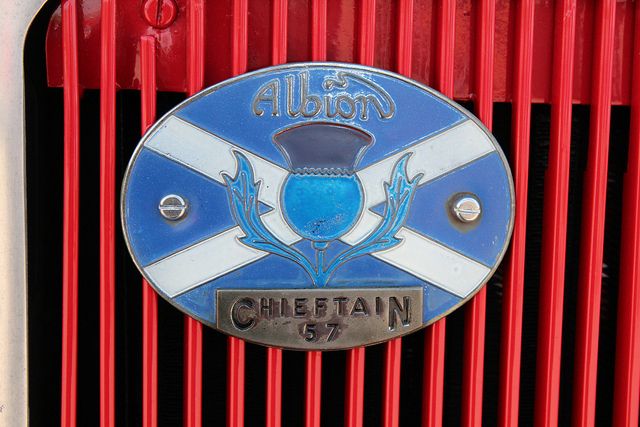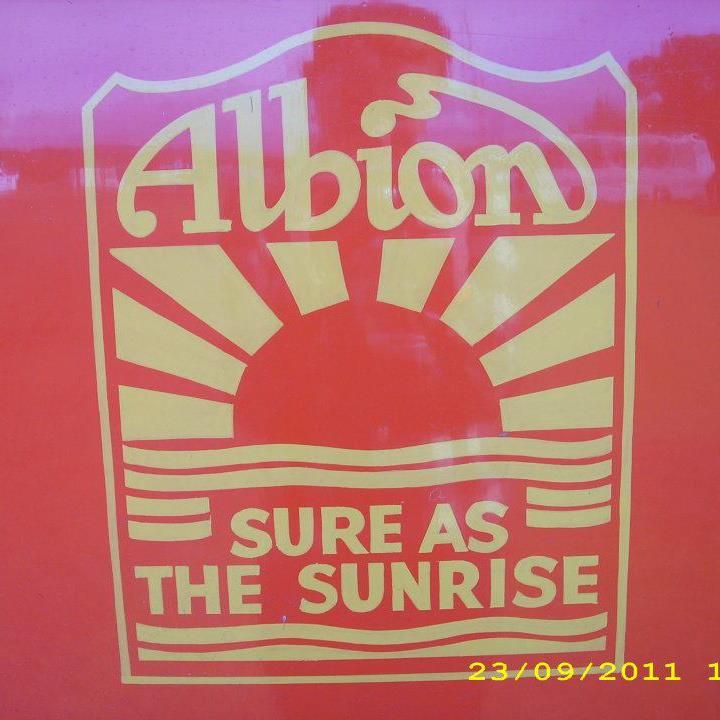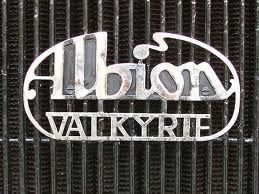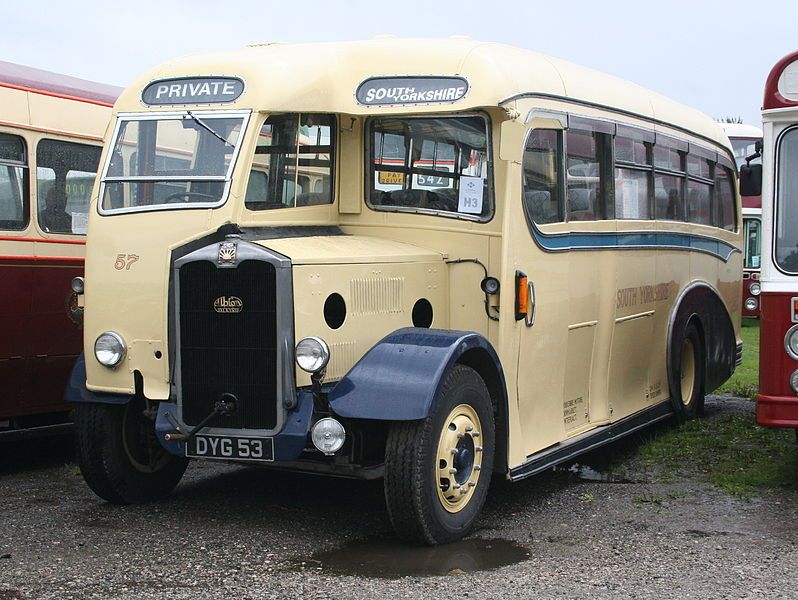Carryfast:
ZB]
Anorak:
VALKYRIE:
With respect,if you carefully read my Post No.10 and Post No.13 I actually state that,to avoid cylinder head gasket problems in the new 700-Series -11.4-litre diesel engine,Dr.Albert D.Fogg,Leyland’s Director of Engineering,strongly favoured a fixed cylinder head for this new engine 
Doug Jack,who worked for Leyland as a legal advisor and later became the Secretary of the Truck
and Bus Division,and who has written several books on Leyland motorcoaches and buses,has stated
that the fixedhead engine was Albert Fogg’s idea as was the 700 CID-11.4-litre capacity.
Albert Fogg joined Leyland in 1964,and became a board member in 1965,Dr-Ing Alfred Mueller left
Leyland in the early 1960s and had nothing to do with the 700-Series engine.Albert Fogg developed
this engine,and when the Leyland marketing men called for the engine to be reduced in capacity
to 8.2-litres because supposedly it was too heavy and too physically large,and had to weigh less
than 1000 Kgs  ,Albert Fogg walked out of Leyland!
,Albert Fogg walked out of Leyland! 
 He must have known that a 500 CID engine was just too small and was not fit for purpose to work in 32 ton GTW lorries
He must have known that a 500 CID engine was just too small and was not fit for purpose to work in 32 ton GTW lorries 

I also state in Part 10 that this sudden reduction in engine capacity resulted in quality control
problems in the production of these engines 
VALKYRIE
It does not seem a bad decision to make the fixed-head engine the size it became. It was not a rash claim, that an 8 litre engine would power a range of vehicles up to 32 ton gross- the Buffalo was a popular 32 tonner, as were the Scania LB80/81, Volvo F86 and DAF F2000-2300 (Good post, Lilladan). The fixed-head idea was a bold step, and any new design will take a large investment to make it work- Leyland’s desire to spread the appeal of the engine over as many market segments as possible was a good one.
If Dr Fogg resigned his post, I find it difficult to believe that the capacity of this engine was the reason. The capacity of an engine has no bearing over the quality control of a factory.

The bore/stroke and overall ‘size’ of an engine are 3 of the most important basic starting parameters that will determine it’s eventual performance,efficiency and reliability in service.Accepted ( and proven ) engineering practice shows that a good reasonably stressed big engine will always beat a good overstressed small one.Maybe you can list how many 8 wheeler 32 tonner tippers or even many 4 and 6 wheelers are powered by engines of overall capacities matching those which you’ve listed there today after all these years of development in finding out what works best.The fact is the small overstressed engine idea was a relative flash in the pan based on some dodgy,if not downright incompetent,thinking on both the part of the engineers who believed in it and those customers who bought into such bs.
Best Ergomatic Cabbed-Lorry Model? PART 16.Page 22.TRUCKNETUK
LEYLAND 500-SERIES - LEYLAND 700-SERIES FIXEDHEAD HEADLESS WONDER DIESEL ENGINES.
[ZB]Anorak.
I’ll quote some of what I said in the following posts,VALKYRIE:-
1.
"Best Ergomatic Cabbed-Lorry Model? PART 10.Page 19.TRUCKNETUK
THE LEYLAND 500-SERIES ENGINE WAS ORIGINALLY PLANNED TO BE THE LEYLAND 700-SERIES ENGINE.
The new engine had an overhead camshaft from the start,very durable Stellite valves and was
to be produced as an 11.4-litre - 700 cubic inch displacement engine with slim and compact
dimensions - several prototypes were built.
At a critical stage,the decision was made to reduce the cubic capacity down to 8.2 litres -
500 cid  ,one of the reasons was to get the engine’s weight down below 1000 kg.Leyland wanted to offer a better power to weight ratio - the 700-Series was too heavy.Because of this interference from Leyland management in regard to the engine capacity
,one of the reasons was to get the engine’s weight down below 1000 kg.Leyland wanted to offer a better power to weight ratio - the 700-Series was too heavy.Because of this interference from Leyland management in regard to the engine capacity  ,the development engineer walked out!!!
,the development engineer walked out!!! 



The 500-Series engine was developed to power the new mass-produced Leyland National Single
Decker Bus,certain other bus models and Leyland’s standard medium and heavy lorry range.
COST CUTTING AND WARRANTY COSTS.
A projected military version of the 500-Series,using two cylinder blocks and one crankshaft
to create a V12 engine!  ,never went ahead.
,never went ahead.
Power output range of the 500-Series was from 150 BHP to 220 BHP,but there was a plan to produce
a turbocharged 260 BHP version 
The development of the 500-Series engine suffered a double blow!  :-Insufficient development
:-Insufficient development
funds,and,because of the late decision to reduce the cubic capacity of this engine,quality
control was relaxed - it became a skimpey and slipshod rush job  Hence production tooling
Hence production tooling
quality fluctuated,which resulted in some good engines,but most were bad - according to the
late great Pat Kennett,around 60 percent were faulty! 

These faulty 500-Series engines cost Leyland dearly in warranty payouts 
2.
"Best Ergomatic Cabbed-Lorry Model? PART 11.Page 19.TRUCKNETUK
And here is a very telling piece from BIGLORRYBLOG about the anything but precision-made and disasterous Leyland 500-Series Fixed Cylinder Head Headless Wonder Diesel Engine 
 :-
:-
It’s that Leyland Buffalo moment says Biglorryblog. Let’s hear it for the fixed head engine…or not
12 July 2007
By BIGLORRYBLOG:-
Buffaload2.jpg Obviously the irony of this headline probably escaped the copywriter for this Leyland Buffalo 2 ad from 1979. Good truck better? Let’s face it, given all the problems Buffalo had with the famous (make that infamous) fixed-head 500 engine it probably couldn’t have got any worse! No doubt operators rushed to buy the Buffalo with the TL11, which I think was based old Leyland 680 six-pot (though no doubt my trusty BLB army will tell me if I’m wrong).
The late, and sadly-missed Graham Montgomerie (ex-engineering editor of Commercial Motor) once told me that as a young Leyland technician one of his jobs was to find out why the fixed-head engine kept seizing up. So they took a bunch of engines into the test lab and tried to get them to mis-behave. Only to everyone’s amazement they all ran perfectly. It wasn’t until later that Graham realised that the engines they’d been given were effectively ‘blue-printed’. When they checked the tolerance on the production engines they were all over the place–hence their appalling durability. I certainly remember riding in a Buffalo 2 on a CM roadtest. It was the first time I’d ever been in a truck. (My back has only just recovered…)" UNQUOTE.
DR ALBERT D.FOGG MUST HAVE HAD ENOUGH OF THE MAD AND INCOMPETENT WAYS AND POLICIES OF BRITISH LEYLAND MIS-MANAGEMENT! 




BRITISH LEYLAND WAS A MADHOUSE! 




The transformation of the Leyland 700-Series engine into the 500-Series engine,which obviously
went against  Albert’s engineering ideals,was probably the last straw for Albert in one of a series of stupid and very misguided Leyland policies
Albert’s engineering ideals,was probably the last straw for Albert in one of a series of stupid and very misguided Leyland policies  that he didn’t agree with
that he didn’t agree with 
These also must have included:-
1.The axing of the AEC Super Mandator V8 3VTG High Tower 6x4 Tractive Unit 
2.The axing of the AEC 800-Series/801-Series V8 Diesel Engine programme 
3.Problems with another one of his pet projects:The Leyland National Single Decker Omnibus 
4.All of the precious profits of the British Leyland Truck and Bus Division being used to support the Morris Austin Car Division  ,when the money should really have been spent on Leyland’s obviously more successful and fundimentally MORE IMPORTANT AND CORE BUSINESS of designing,developing and producing lorries,motorcoaches and buses
,when the money should really have been spent on Leyland’s obviously more successful and fundimentally MORE IMPORTANT AND CORE BUSINESS of designing,developing and producing lorries,motorcoaches and buses  - NOT on the lost cause of an irretrievable Morris Austin Car Division!
- NOT on the lost cause of an irretrievable Morris Austin Car Division! 


5.And,of course,The transformation of the Leyland 700-Series engine into the 500-Series engine 
6.There were probably a number of other reasons why Albert Fogg resigned from his several
jobs and positions at British Leyland,including probably being overruled by that very misguided bloody fool,the late Ron Ellis 

 ,who was the General Manager of the Truck and Bus Division
,who was the General Manager of the Truck and Bus Division 
 ,and Albert could also see that British Leyland as a whole,and the lorry and bus division,were all
,and Albert could also see that British Leyland as a whole,and the lorry and bus division,were all
“Going Down The Swanee River” - British Leyland was heading for disaster and was doomed! 

Thus Albert Fogg got the hell out of the British Leyand madhouse! 



10,11,12,13 AND 14-LITRE DIESEL ENGINES WERE THE NORMAL SIZE ENGINES FOR MOST MAXIMUM WEIGHT LORRIES,BUSES AND MOTORCOACHES.
The likes of Volvo and Scania had small capacity,turbocharged diesel engines for some of their
lorry,bus and motorcoach ranges,but being of small capicity,they more stressed and had to work
harder than the average-sized 10,11,12,13 and 14-litre diesel engines.They therefore probably
had higher shorter service lives - they definately had higher maintenance costs! 
So obviously,Leyland had planned the 700-Series to,maybe,replace the 0.680 engine,but jumped on the Volvo and Scania small capacity engine bandwagon by turning it in to the reduced capacity
500-Series 
But why didn’t Leyland produce the engine in two model-sizes?  :The 500-Series and 700-Series
:The 500-Series and 700-Series 
But Leyland Truck and Bus was starved of money  ,so Leyland,although it had a new 8.2-litre
,so Leyland,although it had a new 8.2-litre
engine,it seriously lacked a brand new 11-12-litre engine  ,which should have been the 700-Series,so Leyland could properly compete with the similar sized engines of ■■■■■■■■■■■■■■■■■■■■■■■■■■■■■■■■■
,which should have been the 700-Series,so Leyland could properly compete with the similar sized engines of ■■■■■■■■■■■■■■■■■■■■■■■■■■■■■■■■■  …but,on the other hand,as [ZB] Anorak says,there were the AEC 11.3,12.47 six-cylinder,and AEC 800-Series/801-Series V8-cylinder,plus the Leyland 680 and 690 11.1-litre six-cylinder engines
…but,on the other hand,as [ZB] Anorak says,there were the AEC 11.3,12.47 six-cylinder,and AEC 800-Series/801-Series V8-cylinder,plus the Leyland 680 and 690 11.1-litre six-cylinder engines 
Ramone and Carryfast.
AEC Ltd was a very worthwhile and successful company to own,that made a well-engineered top quality range of commercial and military vehicles  - some of the best lorries,motorcoaches,buses and engines in the world
- some of the best lorries,motorcoaches,buses and engines in the world  - a golden marque name
- a golden marque name  ,A E C,and motor vehicle manufacture
,A E C,and motor vehicle manufacture  - which,if it had been properly properly managed,would still have been producing lorries,motorcoaches,buses and engines today
- which,if it had been properly properly managed,would still have been producing lorries,motorcoaches,buses and engines today  ,probably as part of a multi-marque global motor corporation
,probably as part of a multi-marque global motor corporation  - one of the objective facts I said in my PART 13 of this thread
- one of the objective facts I said in my PART 13 of this thread  :-MULTI MARQUE COMPANIES HAVE FAR BIGGER MARKET SHARES
:-MULTI MARQUE COMPANIES HAVE FAR BIGGER MARKET SHARES 

As usual of late,I’ll let another famous marque name have the last say in this POST 16 





 ,although Leyland very misguidedly dropped the Albion marque from commercial vehicles
,although Leyland very misguidedly dropped the Albion marque from commercial vehicles 
 ,Albion continued to make motor vehicle components
,Albion continued to make motor vehicle components  - which they still do today
- which they still do today  - and is one of the very few companies to survive the British Leyland disaster!
- and is one of the very few companies to survive the British Leyland disaster! 

Albion was,and is,the motor vehicle pride of Scotland  :-
:-
ALBION CHIEFTIAN 57 OVAL SCOTTISH FLAG WITH FLOWER OF SCOTLAND SPEAR THISTLE MODEL NAME BADGE  :-
:-

ALBION MARQUE SUNRISE AND SURE AS THE SUNRISE SLOGAN BADGE  :-
:-

Albion named most of their various motorcoach and bus models with wonderful names that began
with the letter V:VALIANT,VALOROUS,VENTURER,VICTOR,VIKING and my great,charismatic and very attractive TruckNetUK username namesake of Aryan- Germanic-Norse-Teutonic origin:VALKYRIE 
 :-
:-

And here is a magnificent and preserved Albion Valkyrie motorcoach  :-
:-
Albion Valkyrie CX13/1950 Burlingham C33F Motorcoach,DYG 53,1941.Chassis No.58023A,Body No.3737,new with Duple C35F body,re-bodied in 1958.South Yorkshire 57,owned by two friends of mine 
 :-
:-

VALKYRIE
that came up with the idea of using a fixed cylinder head for the new engine
![]()
![]()
![]()




